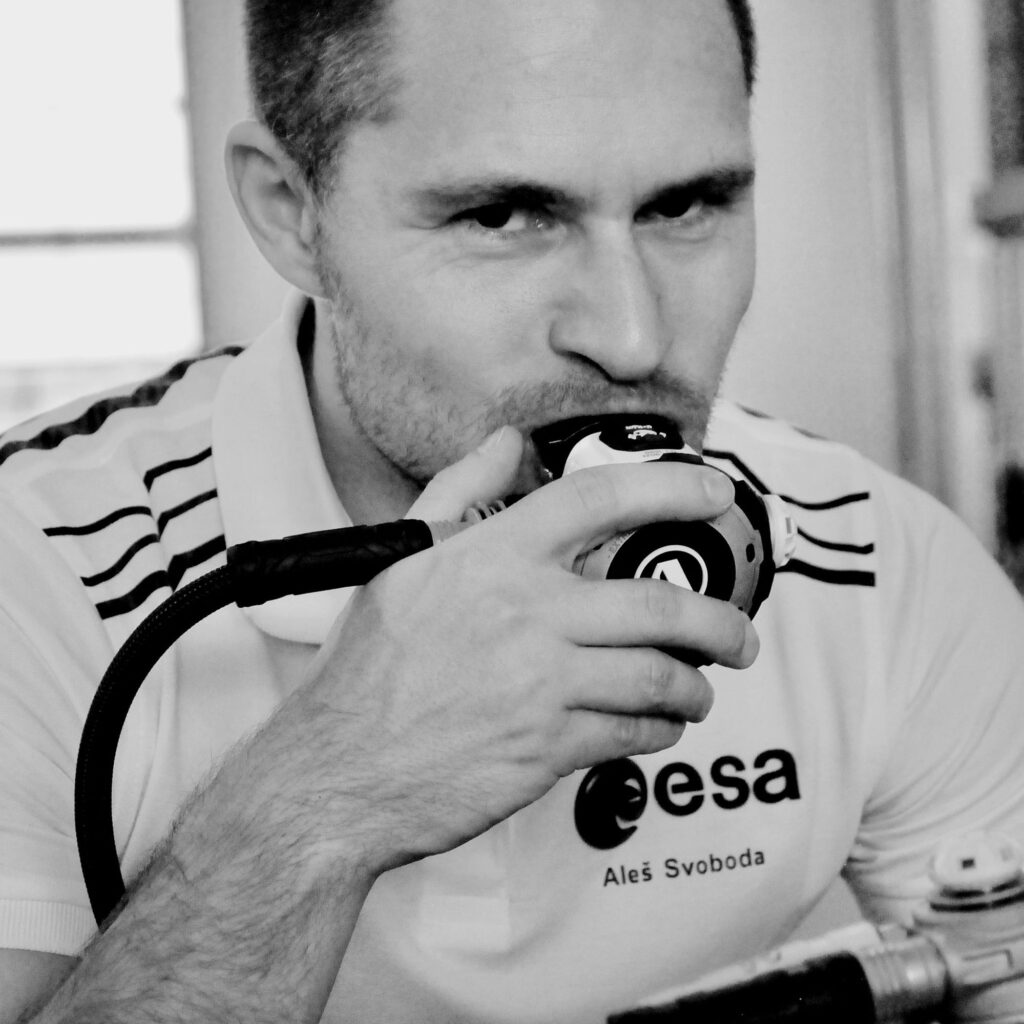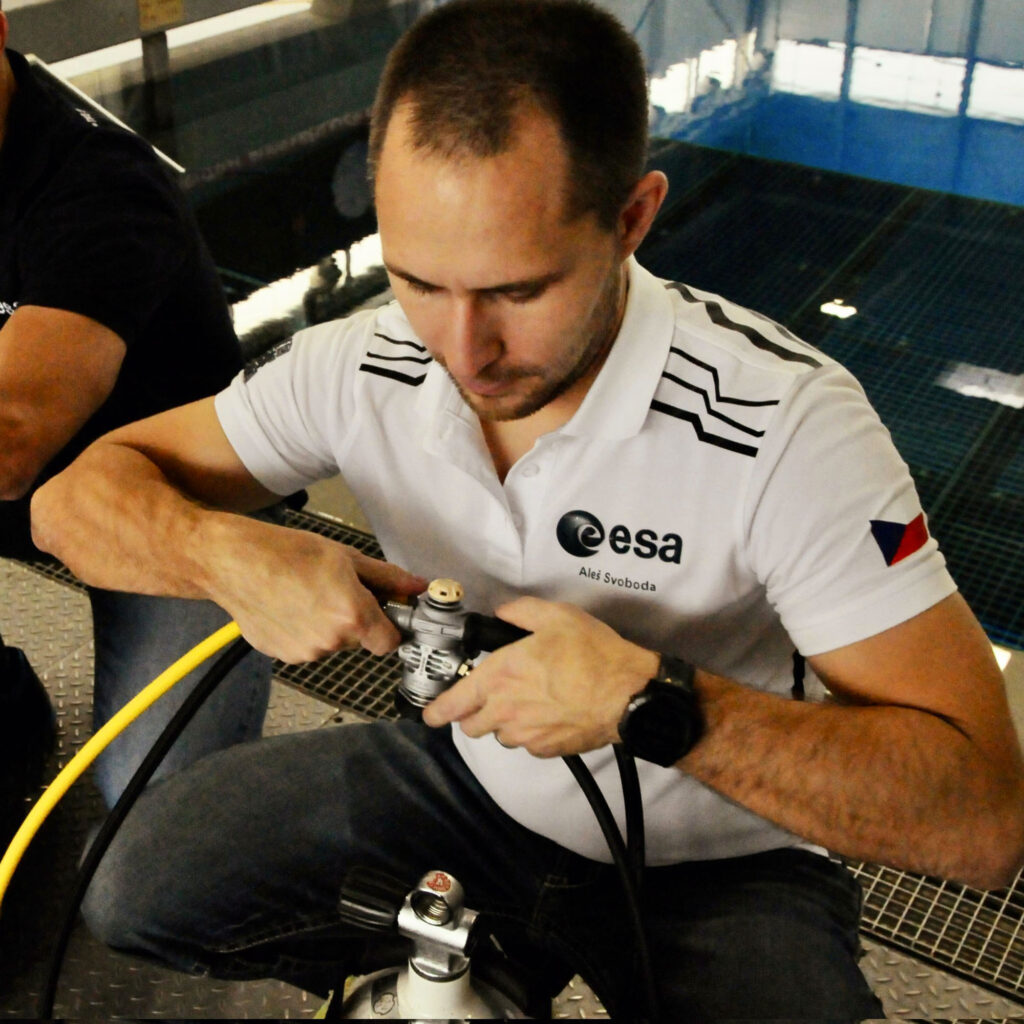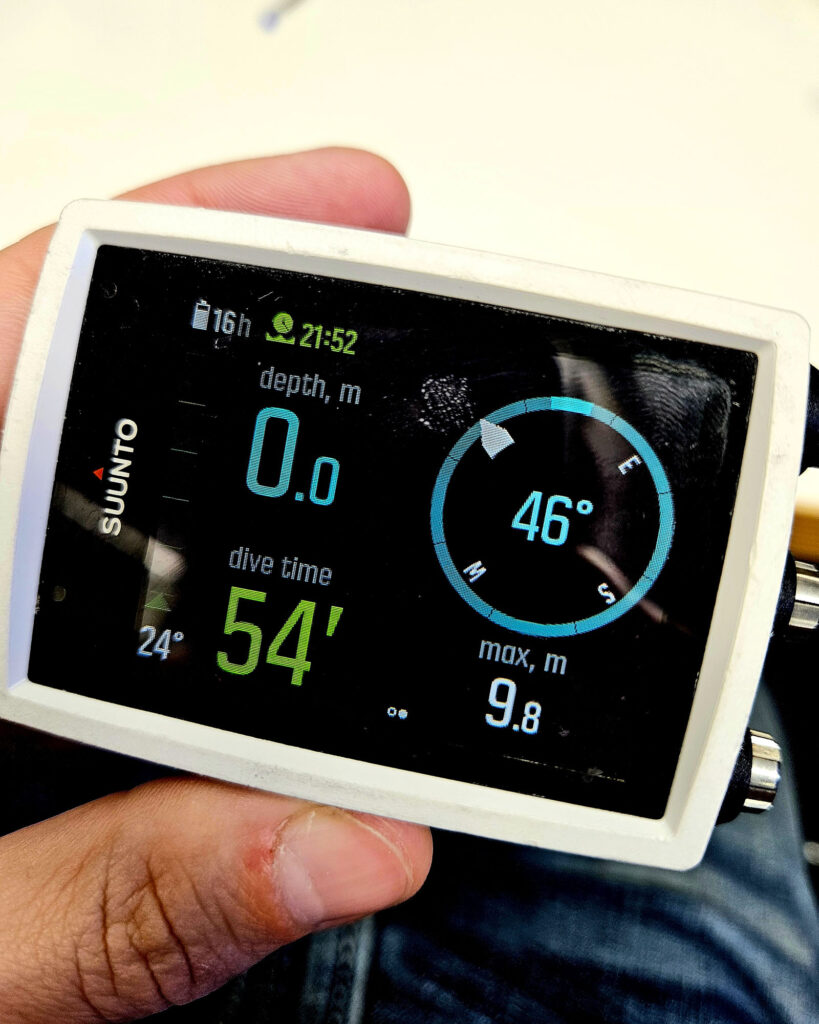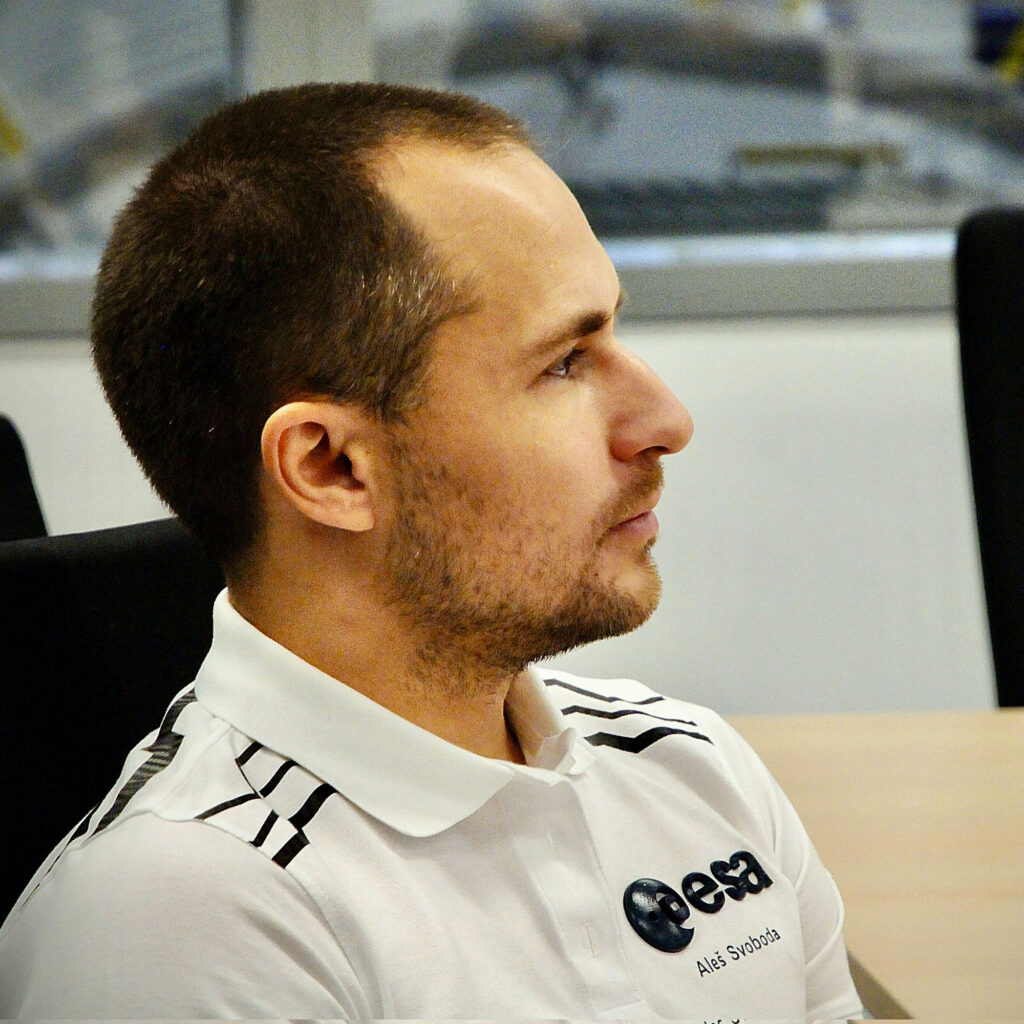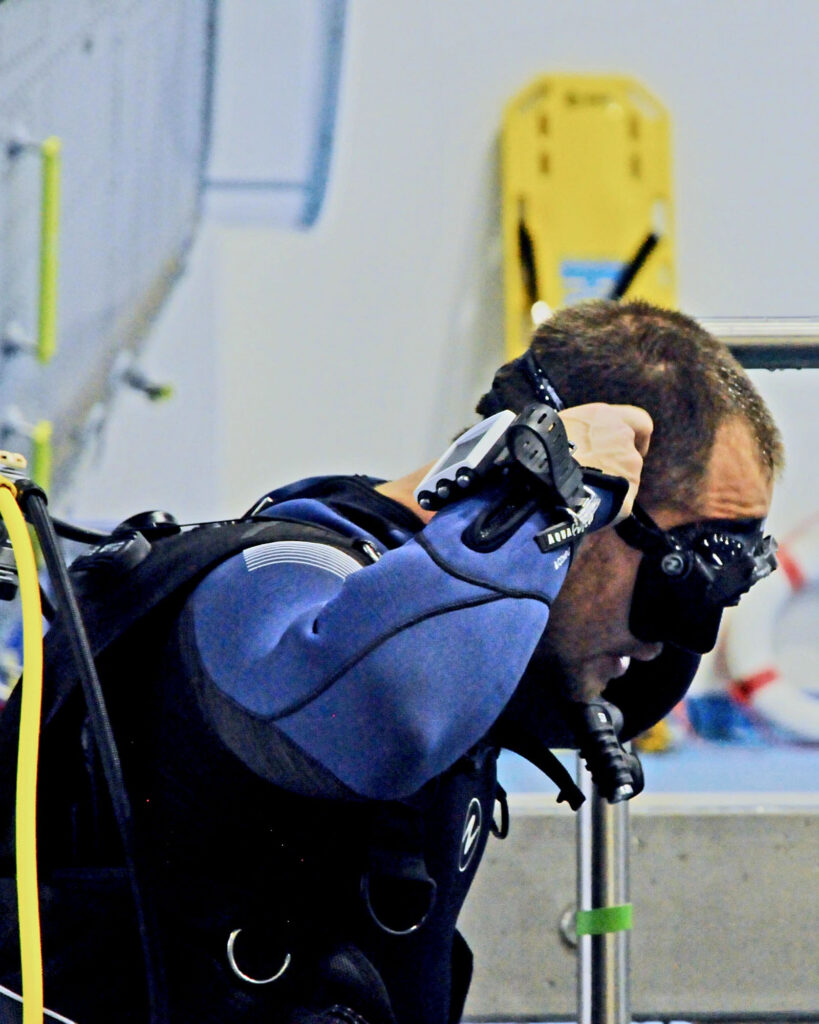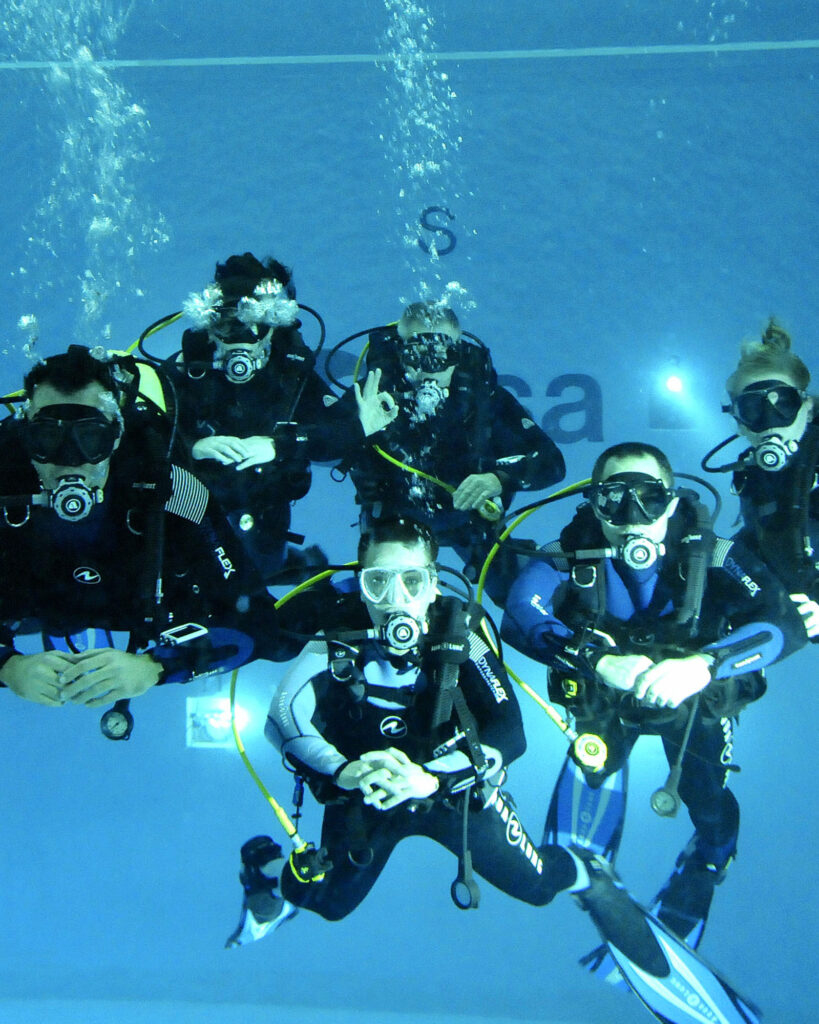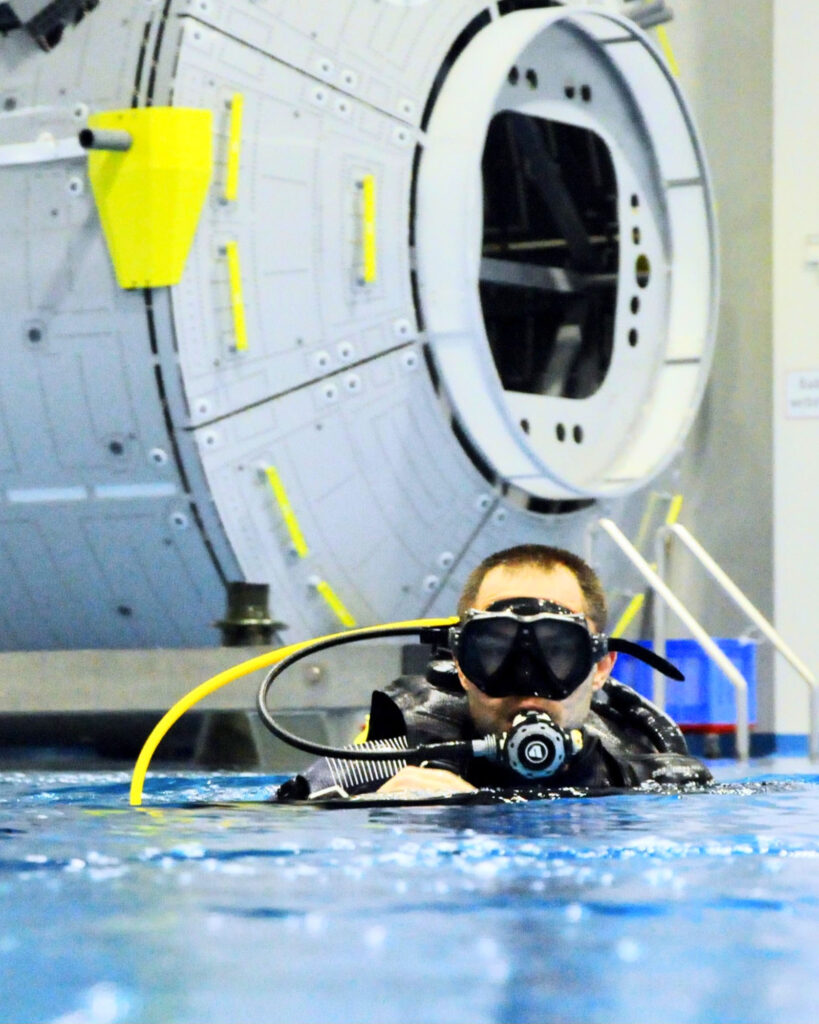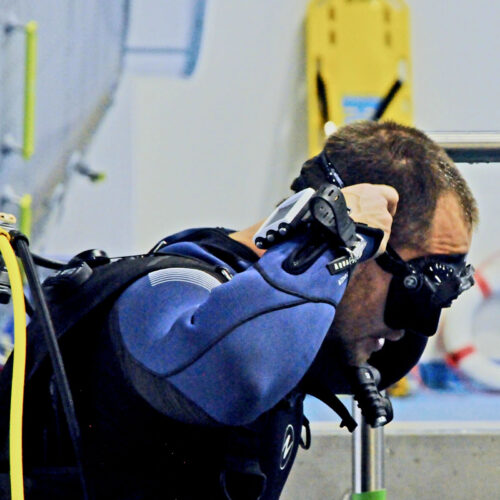
Astronaut diary. Week 4 – Diving and social networking
Monday 18 November
The week started with dive theory, i.e. a review of the basics from the Open Water Diver course, but also an introduction to local procedures specific to NBF. There was also a talk about why the NBF facility was created here in Germany, why it is located where it is, and how EVA (Extravehicular Activity) training, or free space ascents, for NASA, ESA and other agency astronauts is different. The idea to build the NBF dates back to the time of the European Hermes shuttle project, which was to be launched on Ariane rockets, and for which the Cologne airport was to serve as a landing pad. In the era of the US Space Shuttle programme, Cologne was one of Europe’s back-up airports in case of launch abort and emergency TAL (Transoceanic Abort Landing). Following the Hermes programme, it was decided that the European Astronaut Centre (EAC) would also be located here – just outside the fence of Cologne Airport. As it was envisaged to carry out EVAs from Hermes, the idea was also to build a special pool at the EAC, just big enough to accommodate a replica of the future European Space Shuttle. Unfortunately, the Hermes program eventually ended in the 1990s, but the EAC and the NBF pool remained.
After about two hours of theory about diving followed the test – successfully passed. Then came the familiarization with diving equipment, i.e. tests of jackets, goggles, fins, familiarization with tanks, types of regulators used here and procedures on the shore around the pool (the so-called “deck”).
The afternoon was focused on physical training. There were two lectures, three hours in total, on physiotherapy and the prevention of health problems in an astronaut’s career, and on physical preparation and compensatory exercises while on the ISS.
Tuesday 19 November
Tuesday started with two hours of training in the gym. Warm up, then a series of exercises for motor coordination, jumping, then circuit training and finally a 15 minute stretching session. The afternoon program was quite individual. I had a preventive dermatological examination, which is part of the annual health certification. However, it is done at an outside facility and on a separate date (which is why it was only now). Then came a session with a space medicine doctor (called a Flight Surgeon) who makes sure we are medically prepared for spaceflight. The session was very useful as the results of the medical examinations – both initial and regular ones – were reviewed and recommendations for further prevention were made if necessary. At the same time, I also had the opportunity to learn about the pre-flight medical checks and quarantine process, which usually starts 14 days before the planned launch.
Wednesday 20 November
The third day of the fourth week started a bit unconventionally – with training on social media and networking. As this is an increasingly used communication tool, it is essential to be familiar with it as part of the overall training on communication and media. The training was led by ESA experts who handle digital communications for the entire organisation.
But the afternoon was again dedicated to diving. This time for the first dive in the pool, which also served as a skills test for the NBF-NBL SCUBA Guest Diver certification. Due to the capacity of the pool and the number of support divers and instructors, we only do a maximum of two of us doing the test in one day. So today it was the turn of me and a colleague from Germany. Before the actual dive we had a cursory health check with a local doctor, who is always part of the support team when diving. This was followed by a detailed briefing on the dive process, changing into wetsuits and setting up the gear. Then it was off to the water. The dive itself consisted of a series of skills that were always demonstrated by the instructor team, and then we had to demonstrate the skill. As everything went off without a hitch, there was even time for a few photos together underwater. After surfacing, there was a short safety break at the surface, then a shower, debriefing and about an hour after the end of the dive we were able to go home.
Thursday 21 November
Thursday was in a similar vein to the previous day. Continued social media training in the morning and a planned exercise in the afternoon in the Gym. Since I had already completed my SCUBA certification from the previous day, I was able to take another NBF dive to join the certification dive of my two colleagues. Since I found this more useful than going to the gym to practice (which I can do any other time), I preferred to dive.
Friday 22 November
We finished the week with social media training again. This time with practical activities totalling about six hours. Although the subject is not quite what one imagines when one says astronaut training, it is clear that public communication is an important part of the entire space program and social media is one of the most used communication channels today. And the training was not only very well prepared, but I found it quite useful…
